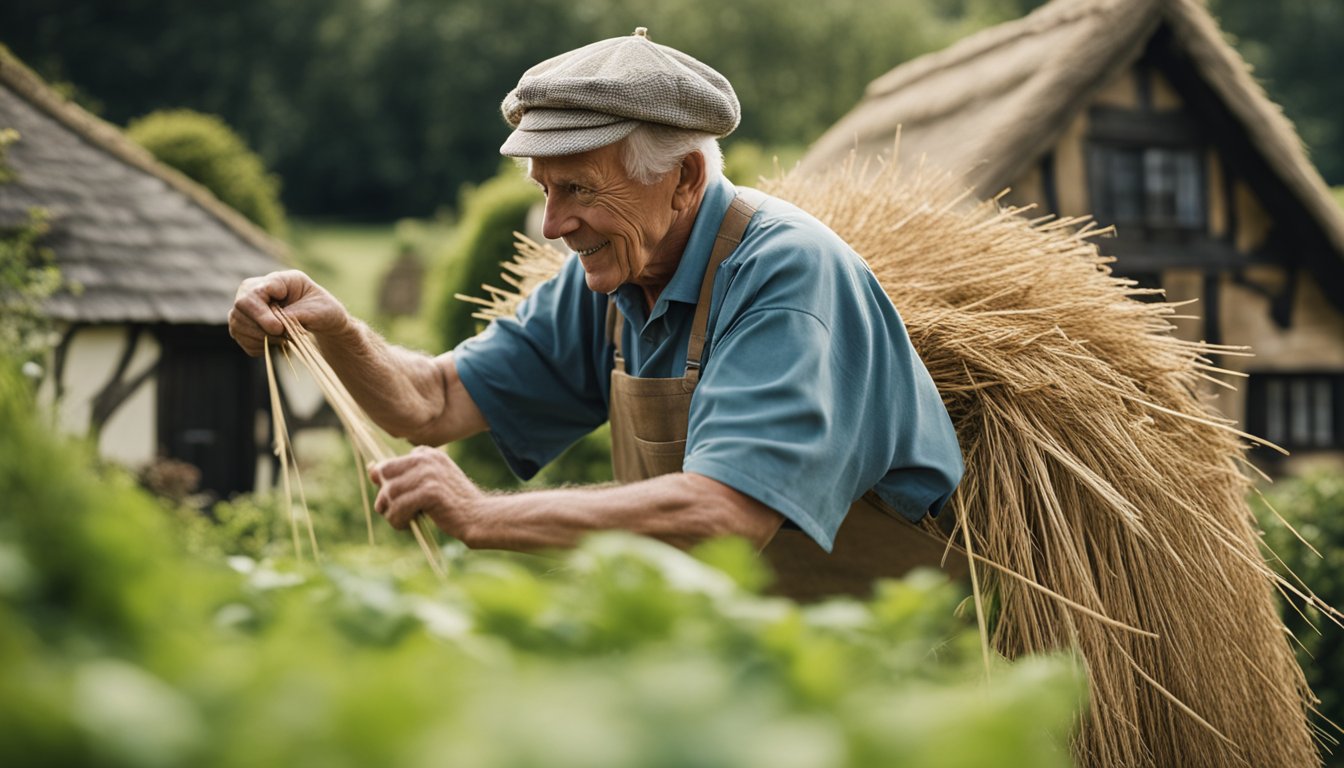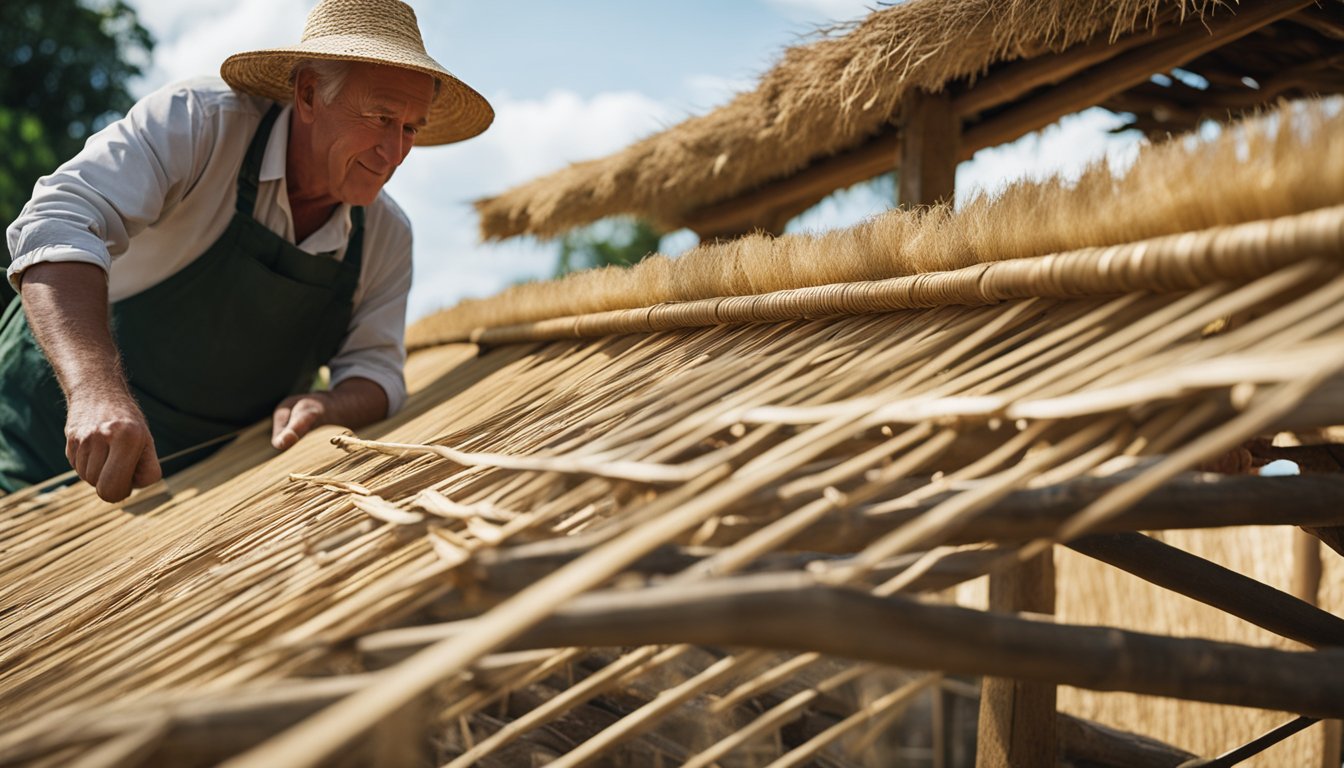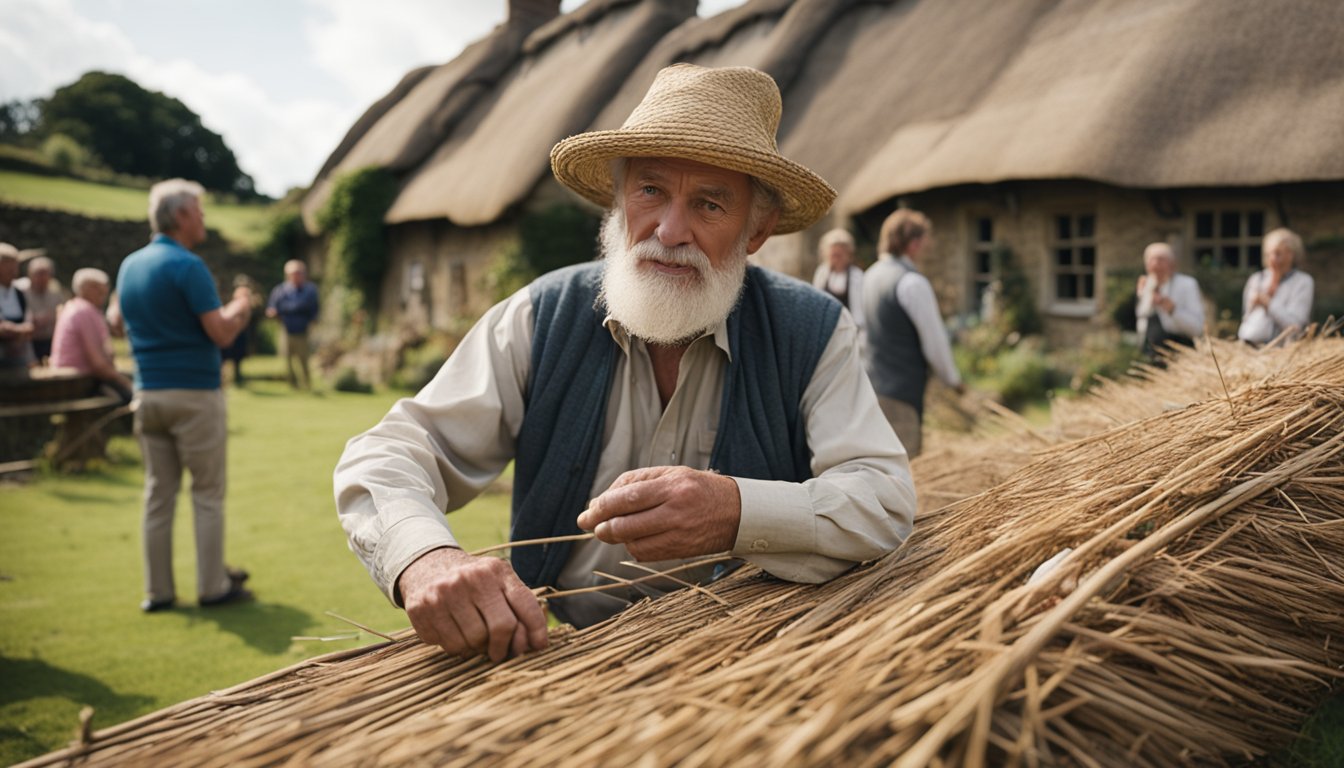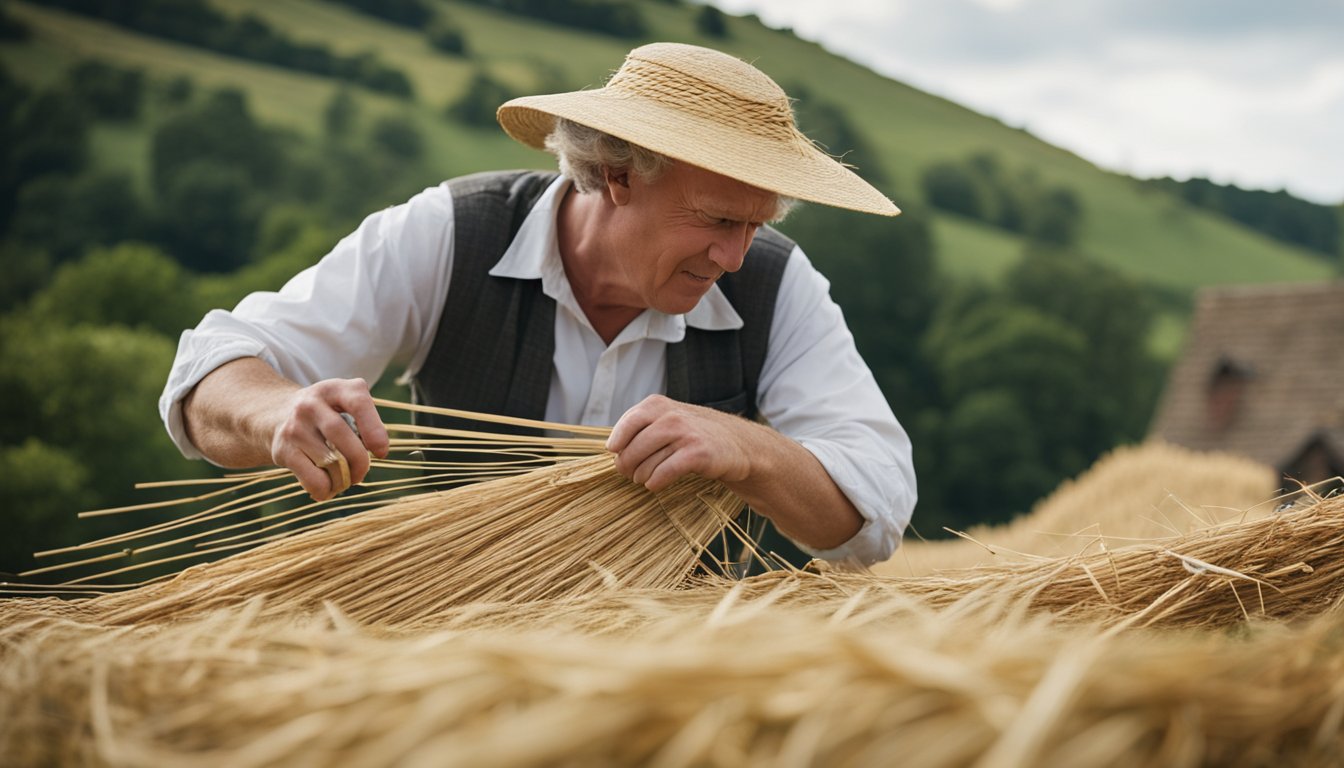Late updated: 17 Aug 2024 11:08
Written by: Oliver Bennett
Traditional Thatching Techniques for UK Homes: Craftsmanship and Heritage
Thatching is not just a roofing technique; it's an art passed down through generations, deeply rooted in the history of UK homes. The unique charm of thatched roofs, with their rustic aesthetic and traditional techniques, adds a distinctive character to British architecture. Using materials like water reed, cereal thatch, and long straw, thatching creates a durable and visually appealing roof that has stood the test of time.

In modern England, what was once a practical solution for the poor has become a stylish, sought-after feature for homeowners looking to add a touch of historical elegance to their properties. The meticulous process involves stitching layers of thatch to roof timbers and intricately knotting bundles of straw to secure them in place, showcasing a technique honed over millennia. These methods not only reflect our cultural heritage but also offer insights into sustainable living practices.
We’ll explore the various materials and techniques used in traditional thatching, the cultural significance behind this ancient craft, and why it remains relevant today. Let’s delve into the world of thatched roofs and discover why this age-old craft continues to captivate and inspire us.
Key Takeaways
- Thatching uses natural materials like water reed and long straw.
- Traditional techniques involve detailed, skilled craftsmanship.
- Thatched roofs are a cultural icon and sustainable roofing option.
Materials and Techniques in Thatching

Thatching involves a range of specialised materials and techniques to create durable and aesthetically pleasing roofs. We will explore the materials used, such as straw, reed, and other natural resources, along with the methods employed by thatchers to construct these intricate roof coverings.
Types of Thatching Materials
Straw: Long straw and combed wheat reed are traditional choices for thatching in the UK. Long straw is typically sourced from cereal crops and is often bundled into sheaves. It's known for its durable, flexible qualities.
Reed: Water reed, harvested from wetlands, is another prominent material. It has long-lasting properties, often outlasting other materials by decades.
Sedge and Heather: Sedge and heather are sometimes used for ridgelines and specific regional styles.
Secondary Materials: Materials like hazel spars, used to fix the thatch, and other plants such as marram grass and bulrush, may be employed depending on regional tradition and availability.
Constructing a Thatched Roof
Underlayer Creation: A critical step involves the arrangement of a base layer. This often consists of thatching spars and fixings to create a sturdy underlayer for the main thatching material.
Laying the Thatch: The thatch material, whether it be straw or reed, is laid in overlapping layers. This layering technique ensures water runs off efficiently, preventing leaks.
Securing the Thatch: The bundles are tied securely using cords or hazel spars. Master thatchers employ intricate knotting methods to ensure durability.
Ridgeline Design: The ridgeline is then formed, often using sedge or other suitable materials. This area is crucial for the longevity of the roof.
Finishing Touches: Tools such as leggetts are used to create a neat finish, pushing the material into place. Each region may have unique stylistic elements that distinguish their technique.
Cultural Significance and Preservation

Traditional thatching holds deep cultural significance in the UK, reflecting centuries-old craftsmanship and architectural styles. Preserving this heritage requires a blend of historical knowledge and modern conservation techniques.
Historical Evolution of Thatching
Thatching dates back to the Bronze Age, when straw, reeds, and flax were commonly used. By the Middle Ages, thatched roofs were prevalent in rural communities, covering cottages, farm buildings, churches, and even castles.
In the Tudor period, the widespread use of thatch extended across East Anglia, Dorset, Norfolk, and Wales. During the 19th century, thatched roofs symbolised the picturesque and romantic rural idyll, despite their association with peasants and farmers.
Events like the Great Fire of London highlighted the flammability risks, yet thatching continued, with expertise passed down through apprenticeships.
Conservation and Modern Thatching
Conservation Efforts: Preserving our thatched heritage involves using authentic materials like water reed and long straw. Conservationists focus on maintaining the traditional aesthetics and insulation properties, while fire risk remains a concern. Master thatchers and apprentices ensure the continuity of skills, especially in counties like Somerset, Cornwall, Berkshire, and Oxfordshire.
Modern Practices: While modern thatching sometimes incorporates imported materials for durability, purists prefer home-grown resources. Thatching now appeals to a diverse audience, transforming roofs from the "poor's roofing" to a mark of luxury and sustainability. Re-thatching, repair, and maintenance efforts are vital, with a focus on sustainable practices to balance historical fidelity and contemporary needs.
Frequently Asked Questions

Our aim is to shed light on traditional thatching techniques for UK homes by addressing some of the most common queries. We'll discuss construction methods, materials, longevity, styles, and maintenance.
How is a traditional thatched roof constructed in England?
A traditional thatched roof in England involves a layering technique. We lay bundles of thatch, typically starting from the bottom and working upwards, each layer overlapping the one below it. This method ensures water runoff is efficient. The thatch is secured with spar rods, making for a strong and durable roof.
What materials are typically used for thatching roofs in the UK?
The primary materials used in UK thatching include wheat reed, long straw, and water reed. Wheat reed is valued for its durability. Long straw, on the other hand, is often used for its aesthetic appeal. Water reed is durable and weather-resistant, ideal for harsh climates. Each material offers unique benefits.
How long can one expect a traditionally thatched roof to endure?
A well-maintained thatched roof can last a remarkably long time. Depending on the materials and quality of work, a thatched roof can endure for around 20 to 40 years. Water reed roofs tend to last longer, with the potential to exceed 50 years, compared to wheat reed and long straw.
Can you explain the different styles of thatching found in the UK?
There are various thatching styles across the UK, including East Anglian, Devon, and Cotswold styles. East Anglian style uses water reed in a combed wheat system. Devon style involves the use of wheat reed or long straw applied in a distinctive, rounded shape. Cotswold style features distinctive ridges, often with decorative patterns.
Why are thatched roofs a characteristic feature of English cottages?
Thatched roofs have become synonymous with English cottages due to their historical prevalence and charming appearance. Originally a practical, local solution for roofing, thatch has now become a symbol of rustic allure and traditional craftsmanship. These roofs are often seen as quintessentially British, adding a fairytale quality to cottages.
What maintenance is required to preserve the integrity of a thatched roof?
Proper maintenance is crucial for the longevity of a thatched roof. Regular inspections are necessary to check for damage or wear. Re-thatching or patching may be required, especially in areas more exposed to weather. Additionally, managing moss and algae growth can prevent water retention, ensuring the thatch remains dry and effective.
